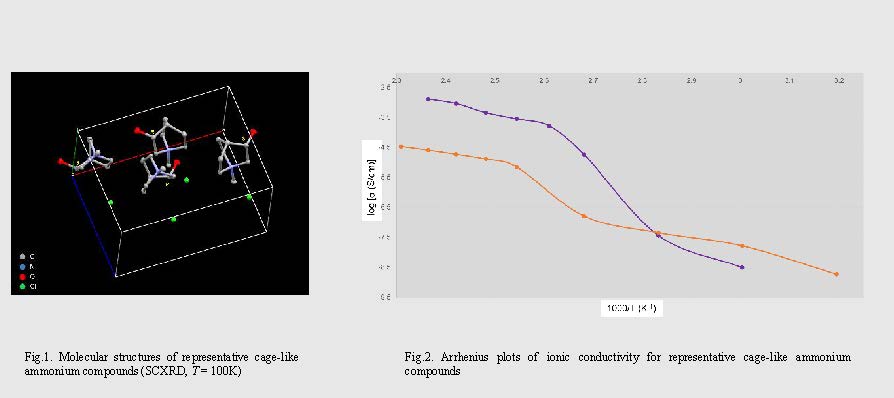
IMCE
Institute for Materials Chemistry and Engineering, Kyushu University
九州大学
先導物質化学研究所

LAST UPDATE 2025/06/02
-
研究者氏名
Researcher Name伊藤正人 Masato ITO
准教授 Associate Professor -
所属
Affiliation九州大学 先導物質化学研究所
分子集積化学部門
Institute for Materials Chemistry and Engineering, Kyushu University
Division of Applied Molecular Chemistry -
研究キーワード
Research Keywords超イオン伝導体
電極材料
合理的分子設計
Superionic conductors
Electrode materials
Rational molecular design
- 研究テーマ
Research Subject -
合理的分子設計による新しい機能性材料の開発
Development of new functional materials with rational molecular design
研究の背景 Background of the Research
カーボンニュートラル実現に向けて取組むべき省・創・蓄エネルギーに対して二次電池が中核的役割を果たす為には,依然として飛躍的な技術進化が求められています.これまでに二次電池の要素材料としては主に「非分子性」無機固体材料が用いられてきましたが,少し視点を変えれば「分子性」有機固体材料にも出番があるように思えます.後者の特長である多様で精密な分子設計によって既存材料を超える性能を示す要素材料さえ見つかれば,それに沿ったデバイス設計が加速して様々なボトルネックが克服できる可能性があります.
A significant technological breakthrough is still required for secondary batteries to play a central role in achieving carbon neutrality through energy saving, generation, and storage. Until now, non-molecular inorganic solids have primarily been used as component materials for secondary batteries. However, if we slightly shift our perspective, there may also be promising opportunities for molecular organic solids. Exhaustive and rational molecular design could potentially lead to the discovery of a groundbreaking new material, which would facilitate the development of new devices and help overcome existing bottlenecks.
研究の目標 Research Objective
ある種のかご状アンモニウム化合物が超イオン伝導性(>1 mS/cm)を示すことを見いだし,それらが特長あるビシクロ構造(Fig. 1)に基づいて,小さな融解エントロピーを示し,幅広い温度範囲で柔粘性結晶相を維持することによって,超イオン伝導性を発現することを明らかにしました(Fig. 2).これらを活用すれば現行リチウムイオン電池のエネルギー密度を上回る全固体電池を創製できる可能性があるため,その実現に向けて電極材料の探索研究を進めています.
We discovered that certain cage-like ammonium compounds exhibit superionic conductivity (>1 mS/cm). We revealed that their characteristic bicyclic structures (Fig. 1) may result in low melting entropy and allow their plastic crystal phase to persist over a wide temperature range, thereby enabling exceptionally high conductivity (Fig. 2). The use of these materials could potentially lead to the development of all-solid-state batteries with energy densities exceeding those of current lithium-ion batteries. Accordingly, we are conducting ongoing research to identify suitable electrode materials to realize this potential.
研究図Figures

論文発表 / Publications
Chem. Asian J., 10.1002/asia.202401781, (2025); Electrochemistry, 10.5796/electrochemistry.23-00124, (2024); RSC Advances, 10.1039/d3ra03187j, (2023)
研究者連絡先 / HP
- mito
 cm.kyushu-u.ac.jp
cm.kyushu-u.ac.jp - http://cp.cm.kyushu-u.ac.jp/